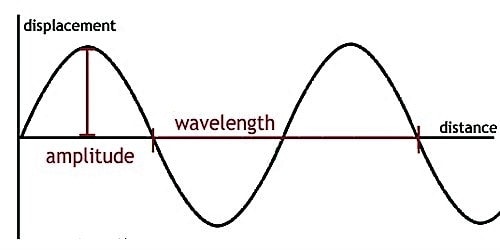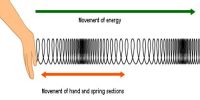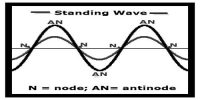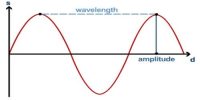A progressive wave is defined as the forward transmission of the vibratory motion of a body in an elastic intermediate from one element to the successive particle. Progressive waves allocate energy from a point source to a contiguous area. It moves relative to a coordinate method in a fluid or it advances on the sea surface or at an intermediate depth. They move energy in the form of vibrating particles or fields.
Characteristics of progressive wave:
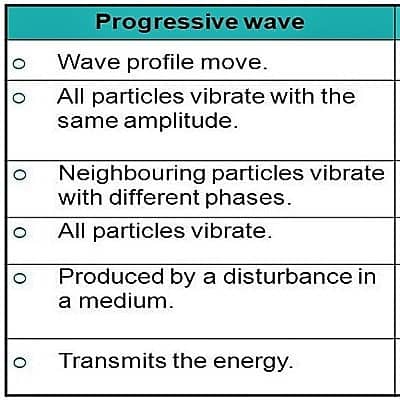
(i) Every particle of the medium completes vibration about its mean position. Progressive wave is a disturbance which moves through a medium with a definite velocity without changing its shape. The disturbance progresses forward from one particle to another.
(ii) The particles of the medium vibrate with the same amplitude of their average positions. All the particles should the same highest velocity when they pass through the average position. The phase of every particle varies from 0 to 2π.
(iii) No particle continues permanently at the break. Twice when each vibration, the particles are instantly at the break at extreme positions, different particles get the position at a different time.
(iii) Each progressive particle of the medium performs a motion similar to that of its ancestor along with the distribution of the wave, but later in time.
(iv) The amplitude of each partied is similar but the phase changes constantly.
(v) Transverse progressive waves are characterized by peaks and pit. Longitudinal waves are characterized by compressions and rarefactions.
(vi) There is a transfer of energy across the medium in the way of the spread of the progressive wave. Energy is transferred along the direction of spread of wave but the matter is not transferred.
(vii) The displacement, velocity, and acceleration of the particle divided by mλ are the same, where m is an integer. At the instant, the phase of oscillation changes from particle to particle because each particle starts oscillation little later than the previous particle.
(viii) The velocity of propagation of the wave is constant but the velocity of an oscillating particle is different at different state of oscillation maximum at the mean position and ‘0’ at the extreme position.
